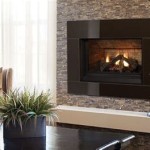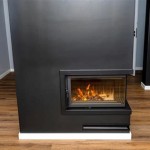Candles That Capture the Essence of a Fireplace
The allure of a crackling fireplace transcends mere warmth; it evokes feelings of comfort, nostalgia, and tranquility. However, the convenience of modern living often deprives individuals of this sensory experience. Candles that smell like a fireplace offer a readily accessible substitute, providing a fragrant approximation of burning wood without the complexities and maintenance associated with a traditional fire. These candles have gained significant popularity, appealing to those seeking ambiance, relaxation, or a way to enhance the atmosphere of their living space.
The creation of these fragrances relies on a sophisticated understanding of the chemical compounds released during wood combustion. Perfumers and fragrance designers meticulously blend various natural and synthetic aroma molecules to replicate the complex scent profile of a fireplace. The resulting fragrances often incorporate notes of smoky wood, charred embers, resinous pine, and even faint hints of spice, mirroring the layered olfactory experience of a genuine fire.
Understanding the Key Fragrance Components
The success of a "fireplace" scented candle hinges on accurately recreating the key fragrance components associated with burning wood. Several elements contribute to the overall sensory profile, each playing a crucial role in capturing the essence of a traditional fire.
Woody Notes: These form the foundation of the fragrance. They are typically derived from essential oils or synthetic aroma chemicals mimicking the scents of various wood types. Cedarwood, sandalwood, birch tar, and guaiac wood are commonly used to impart a dry, woody aroma. These notes provide the depth and authenticity that define the fireplace scent. The specific wood types used can significantly alter the character of the fragrance. For instance, cedarwood offers a slightly sweet, comforting aroma, while birch tar contributes a more intense, smoky and leathery note.
Smoky Accords: The smoky element is often achieved through the use of cade oil or synthetic smoky aroma chemicals. Cade oil, derived from juniper wood, offers a potent, smoky, and slightly medicinal scent. Synthetic smoky accords provide greater control over the intensity and character of the smoke. The appropriate amount of smoky notes is crucial; too much can overwhelm the fragrance, while too little will render the candle devoid of its defining characteristic. The smoke should be balanced and integrated with the other fragrance components.
Spicy Undertones: Subtle hints of spice can add complexity and warmth to the overall scent profile. Clove, cinnamon, and nutmeg are frequently used in small quantities to introduce a comforting, slightly sweet, and aromatic dimension. These spices complement the woody and smoky notes, creating a more rounded and inviting fragrance. The use of spices should be restrained to avoid dominating the core fireplace scent. The intention is to enhance the overall warmth and depth, not to create a overtly spicy aroma.
Resinous Touches: The inclusion of resinous notes, such as frankincense or myrrh, provides a subtle sweetness and depth to the fragrance. These resins offer a balsamic quality that complements the woody and smoky elements, adding to the richness and complexity of the scent. They also contribute a feeling of warmth and grounding, enhancing the overall ambiance of the candle. Resins should be used judiciously, as their potent aromas can easily overpower other fragrance components.
Ember-like nuances: Some candles incorporate subtle "ember-like" nuances to further enhance the realism of the fragrance. These can be achieved through the use of specific aroma chemicals that evoke the feeling of glowing coals or the lingering scent of extinguished embers. These notes add a layer of detail and authenticity, creating a more immersive and convincing fireplace experience. The subtlety of these notes is critical, as they are intended to be perceived as an undertone, not a dominant element.
Factors to Consider When Choosing a Fireplace Scented Candle
Selecting a fireplace scented candle involves more than simply choosing a pleasing aroma. Several factors influence the quality and overall experience provided by the candle.
Wax Type: The type of wax used significantly impacts the scent throw, burn time, and environmental impact of the candle. Soy wax is a popular choice due to its clean burning properties, biodegradability, and ability to hold fragrance effectively. Paraffin wax, a petroleum byproduct, is a more affordable option but may produce more soot and have a less desirable environmental profile. Beeswax is a natural option that burns cleanly and produces a warm, honeyed scent, but it is typically more expensive than soy or paraffin wax. The type of wax should align with individual preferences regarding environmental impact, burn quality, and fragrance performance.
Wick Type: The wick plays a crucial role in how the candle burns and releases its fragrance. Cotton wicks are a common choice, while wood wicks offer a distinctive crackling sound reminiscent of a real fireplace. The appropriate wick size and type will depend on the diameter of the candle and the type of wax used. An undersized wick will not melt the wax evenly, resulting in tunneling, while an oversized wick can produce excessive smoke and soot. Wood wicks can provide an enhanced auditory experience, but they may require more maintenance and attention to ensure proper burning.
Scent Intensity: The strength of the fragrance is a matter of personal preference. Some individuals prefer a subtle scent that gently fills the room, while others prefer a more potent aroma. Scent intensity is influenced by the concentration of fragrance oil in the wax and the type of essential oils/aroma chemicals used. It's advisable to sample the fragrance before purchasing a large candle to gauge its intensity and ensure it aligns with individual preferences. A fragrance that is too strong can be overwhelming, while one that is too weak may be imperceptible.
Burn Time: Burn time refers to the total duration the candle can be burned before the wax is completely consumed. Burn time is influenced by the type of wax, the size of the candle, and the wick type. Candles with longer burn times offer greater value and convenience. It's important to follow the manufacturer's instructions regarding burn time to ensure the candle burns safely and efficiently. Burning a candle for extended periods can lead to overheating and potential safety hazards.
Ingredients and Safety: Prioritizing candles made with high-quality, non-toxic ingredients is essential. Some candles contain synthetic fragrances or additives that can release harmful chemicals into the air. Opting for candles made with natural essential oils and vegetable-based waxes minimizes the risk of exposure to harmful substances. Reading the ingredient list and looking for certifications from reputable organizations can help ensure the candle is safe and environmentally friendly. Avoiding candles with artificial colors or additives is also advisable.
The Psychological Impact of Fireplace Scents
Beyond the purely olfactory experience, fireplace scented candles can have a significant psychological impact, eliciting feelings of comfort, relaxation, and nostalgia.
Association with Comfort and Warmth: The scent of a fireplace is deeply associated with feelings of comfort and warmth, often evoking memories of cozy evenings spent by the fire. These associations stem from cultural and personal experiences linked to the hearth as a gathering place and source of security. The fragrance acts as a sensory trigger, prompting the brain to release feel-good neurochemicals, such as serotonin and dopamine, which contribute to a sense of well-being. This can be particularly beneficial during colder months or times of stress, when individuals seek comfort and relaxation.
Stress Reduction and Relaxation: Studies have shown that certain scents can have a calming effect on the nervous system. The warm, woody aroma of a fireplace scented candle can help reduce stress and promote relaxation. The scent can help to slow down heart rate and breathing, inducing a state of calmness and tranquility. This can be particularly helpful for individuals who struggle with anxiety or insomnia. The use of fireplace scented candles as part of a bedtime routine can create a relaxing atmosphere that promotes sleep.
Nostalgia and Memory Evocation: Scents have a powerful connection to memory, and the fragrance of a fireplace can evoke vivid memories of past experiences. These memories can be associated with positive emotions, such as joy, happiness, and contentment. The scent acts as a time machine, transporting individuals back to cherished moments in their lives. This can be particularly meaningful for individuals who have fond memories of spending time by a fireplace with family and friends. The nostalgic effect of the fragrance can provide a sense of comfort and connection to the past.
Creating Ambiance and Atmosphere: Fireplace scented candles can be used to create a warm and inviting atmosphere in any room. The scent can transform a space into a cozy retreat, making it more conducive to relaxation and socializing. The flickering candlelight adds to the ambiance, creating a sense of intimacy and warmth. The combination of scent and light can enhance the overall sensory experience, creating a more inviting and comfortable environment. This can be particularly effective for creating a welcoming atmosphere for guests or for enhancing the enjoyment of personal time.
While a candle cannot completely replicate the multifaceted experience of a real fireplace with its visual, auditory, and tactile elements, it offers a convenient and accessible way to incorporate the comforting and evocative scent of burning wood into everyday life. Careful consideration of the fragrance composition, wax type, wick type, and overall safety of the candle will ensure a satisfying and enjoyable experience.

20 Fireplace Candles That Smell Like The Real Deal

The 5 Best Candles That Smell Like Campfire Candle Junkies

Firewood Ling Wood Burning Fireplace Soy Wax Candle In

Firewood Ling Wood Fireplace Soy Wax Candle In Amber Jar With Black Lid 9 Oz

20 Fireplace Candles That Smell Like The Real Deal

11 Fireplace Candles That Smell Like The Real Deal

Replica By The Fireplace Scented Candle Maison Margiela Sephora

Fireplace Scented Jar Candle 6 5 Oz Com

The 5 Best Candles That Smell Like Campfire Candle Junkies

Replica By The Fireplace Scented Candle Maison Margiela Sephora
Related Posts








